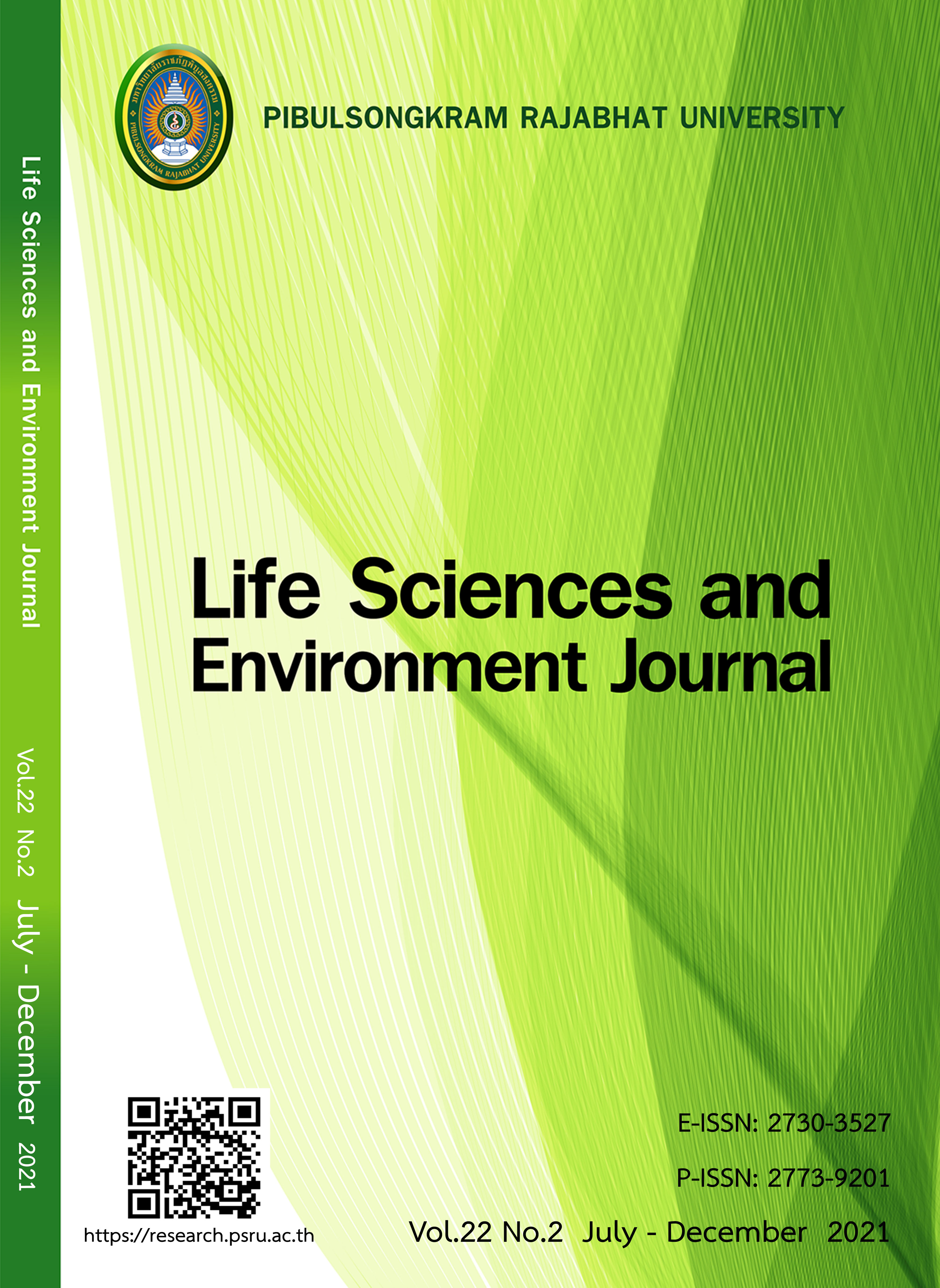PRODUCTION AND ANTIOXIDANT ACTIVITY OF PROTEIN HYDROLYSATE FROM RICE SEED KERNEL
DOI:
https://doi.org/10.14456/lsej.2021.18Keywords:
Rice seed kernel, Protein hydrolysate, Antioxidant activityAbstract
The purposes of this research were to produce and study the antioxidant activity of protein hydrolysate from seed kernel of four rice cultivars: Ayutthaya 1, Suphanburi 1, Pathum Thani 1 and RD 29. To obtain crude protein extract, rice seed kernel was soaked in 0.2 % sodium hydroxide (NaOH) and protein content was determined according to the Lowry method. The results showed that crude protein extract from seed kernel of Pathum Thani 1 had the highest percent yield (8.01 ± 0.08 %) and the highest amount of crude protein (6.92 ± 0.02 g/100 g sample). The protein types and patterns were analyzed by SDS-PAGE technique. Electrophoretic patterns of the extracted proteins have shown a slight difference in the patterns of proteins with molecular weight between 19.3 – 102.1 kDa. The production of protein hydrolysate was prepared by hydrolysis of crude protein extract with 4 M HCl at 100°C for 6 h and antioxidant activity was analysis by DPPH method. Th results showed protein hydrolysate had higher scavenging activity than crude protein extract for all cultivars.
References
Amagliani L, ORegan J, Kelly Al, OMahony JA. Composition and protein profile analysis of rice protein ingredients. Journal of Food Composition and Analysis 2017;59:18-26.
Duangmal K, Sritongtae B. Protein modification using proteases and its applications. KKU Science Journal 2014;42(2):274-288.
Julmanlik T, Kongruang S. Functional properties and applications of egg white protein hydrolysates. Journal of Food Technology, Siam University 2019;14(2):69-87.
Kumagai T, Kawamura H, Fuse T, Watanabe T, Saito Y, Masumura T. et al. Production of rice protein by alkaline extract improves its digestibility. Journal of Nutritional Science and Vitaminology 2006;52:467-472.
Laemmli UK. Cleavage of structural proteins during the assembly of the head bacteriophage T4. Nature 1970;227:680–685.
Lowry OH, Rosebrough NJ, Farr AL, Randall RJ. Protein measurement with the Folin phenol reagent. Journal of Biological and Chemistry. 1951; 193(1): 265–275.
Luna-Vital DA, Mojica L, González de Mejía E, Mendoza S, Loarca-Piña G. Biological potential of protein hydrolysates and peptides from common bean (Phaseolus vulgaris L.): A review. Food Research International 2015;76: 39-50.
Naivikul O. Rice: Science and technology. 3rd ed. Bangkok, Kasetsart University Press; 2013.
Peighambardoust SH, Karami Z, Pateiro M, Lorenzo JM. A review on health-promoting, biological and functional aspects of bioactive peptides in food applications. Biomolecules 2021; 11(5): 1-21.
Rice Department. Handbook: knowledge and pass on knowledge of rice production technology. http://brpe.ricethailand.go.th/images/PDF/handbook_5_bigfarm/1--.pdf Accessed February 4, 2021.
Silvestre MPC, Morais HA, Silva VDM, Silva MR. Degree of hydrolysis and peptide profile of whey proteins using pancreatin. Journal of the Brazilian Society of Food and Nutrition 2013;38(3):278-290.
Thongimpong P, Laohakunjit N, Kerdchoechuen O, Pinitglang S, Thumthanaruk B. Antioxidant and functional properties of extracted sunflower proteins by bromelain and Flavourzyme. KMUTT Research & Development Journal 2016;39(4):565-583.
Downloads
Published
How to Cite
Issue
Section
License
Each article is copyrighted © by its author(s) and is published under license from the author(s).










